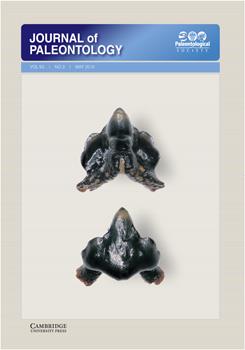The biofacies of the Lower Palmatolepis rhenana Biozone to Palmatolepis triangularis Biozone in the Mae Sariang section, northwestern Thailand, are marked by alternations of Palmatolepis-dominated biofacies and Polygnathus-dominated biofacies related to fluctuations in seawater depth. Fine-grained limestone accumulated through the Lower Palmatolepis rhenana Biozone, Upper Palmatolepis rhenana Biozone, Palmatolepis linguiformis Biozone, Palmatolepis subperlobata Biozone, and Palmatolepis triangularis Biozone. A regression in the Upper rhenana Zone was followed by a recovery transgression that extended up through the linguiformis Zone. Conodont faunas increased until near the end of the linguiformis Zone, but in the overlying subperlobata Zone and triangularis Zone, conodont numbers dropped and most conodont species disappeared. It is possible the event coincides with a glacially forced regression, but there is no evidence of this in the section apart from a positive spike in δ13C. Another possible cause of the global marine extinction event is toxic levels of metals resulting from widespread volcanism. New taxa in this paper are Palmatolepis chaemensis new species, Palmatolepis thamensis new species, and Polygnathus tenellus surinensis new subspecies.
How to translate text using browser tools
26 April 2019
Frasnian-Famennian transition in western Thailand: conodonts, biofacies, eustatic changes, extinction
Norman M. Savage
ACCESS THE FULL ARTICLE

Journal of Paleontology
Vol. 93 • No. 3
May 2019
Vol. 93 • No. 3
May 2019




